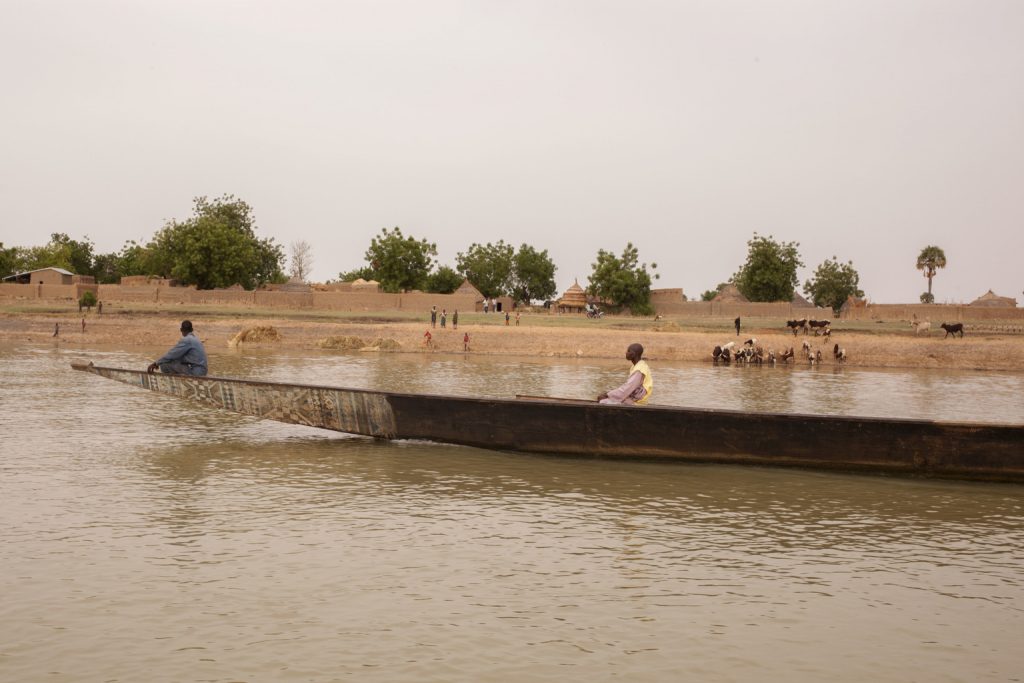In May 2007, a WorldFish team traveled to the Lake Télé-Lake Ntomba Landscape in the Democratic Republic of Congo to conduct a preliminary assessment of the Lake Ntomba fishery. Primary data were collected through rapid rural assessment techniques in seven villages. Three questionnaires were delivered simultaneously in each village, focusing on (a) the fishing activities and fish resources, (b) the farming and other non-farming activities, and (c) the overall socio-economic and institutional context of the villages. In addition, five markets were visited, four in Mbandaka and one in Kinshasa.
Background Reports
Briefings
Preliminary Assessment of Lake Ntomba Fisheries

UNICEF/UN026544/Parry
Zakari Soumana, a vaccinator at the Centre for Integrated Health Programs (CIHP) in Ouna, Dosso District, travels aboard a motorboat with a batch of polio vaccines on the Niger river to the village of Bongnani, Niger, Tuesday, 12 April, 2016. Soumana is to administer polio vaccines to the children in Bongnani, part of an effort to vaccinate all children against the virus.
Niger is no longer poliovirus-infected, according to the Global Polio Eradication Initiative, but remains at high risk of outbreaks. Detection of wild poliovirus type 1 (WPV1) in 2016 in north-eastern Nigeria means the entire region is currently at risk. Niger, along with other countries of the Lake Chad sub-region, declared the outbreak to be a regional public health emergency and is implementing a regional outbreak response, coordinated with neighbouring countries.
Polio is spread through person-to-person contact. When a child is infected with wild poliovirus, the virus enters the body through the mouth and multiplies in the intestine. It is then shed into the environment through the faeces where it can spread rapidly through a community, especially in situations of poor hygiene and sanitation. If a sufficient number of children are fully immunized against polio, the virus is unable to find susceptible children to infect, and dies out.
In Niger, the majority of the population lives far from health facilities. In order to provide health services to people living in the most remote areas, health outreach programs are organized. Health workers travel to designated villages to perform vaccinations and prenatal checkups. Villages situated within a 17-kilometre radius are informed of these events in order for mothers and children to travel to the site on the scheduled day. This strategy has increased the vaccination coverage in many areas.
Related content
Briefing
Key Considerations for Responding to Floods in South Sudan Through the Humanitarian-Peace-Development Nexus
In common with many other African countries, the Republic of South Sudan is increasingly experiencing devastating floods linked to climate change.1,2 The Indian Ocean Dipole (IOD) and El Niño regulate the climate of Equatorial Eastern Africa. In 2019, a dipole…
Central and East Africa Hub
SSHAP
2024
Report
Conflict-Sensitive Returns and Integration in South Sudan
Since fighting flared up in Sudan in April 2023, an estimated 8.2 million Sudanese have been forcibly displaced, out of which 1.7 million are hosted by neighbouring countries, including 588,711 people by South Sudan.1 At the same time, an estimated…
Central and East Africa Hub
2024
Briefing
Key Considerations: Social, Structural and Community Dynamics of Cholera Transmission and Mortality in Ethiopia
The current cholera outbreak in the Federal Democratic Republic of Ethiopia began in August 2022. As of April 2024, active outbreaks had been recorded in most regions of the country, including: Amhara; Dire Dawa; Harari; Oromia; Southern Nations, Nationalities and…
Central and East Africa Hub
SSHAP
2024
Journal Article
Psychosocial concerns in a context of prolonged political oppression: Gaza mental health providers’ perceptions
Abstract In this qualitative exploratory study, we investigated the perspectives of mental health providers in Gaza, Palestine, regarding the primary concerns of their clients who are exposed to low-intensity warfare and structural violence. We conducted qualitative interviews with 30 psychologists,…
McGill University
2022


